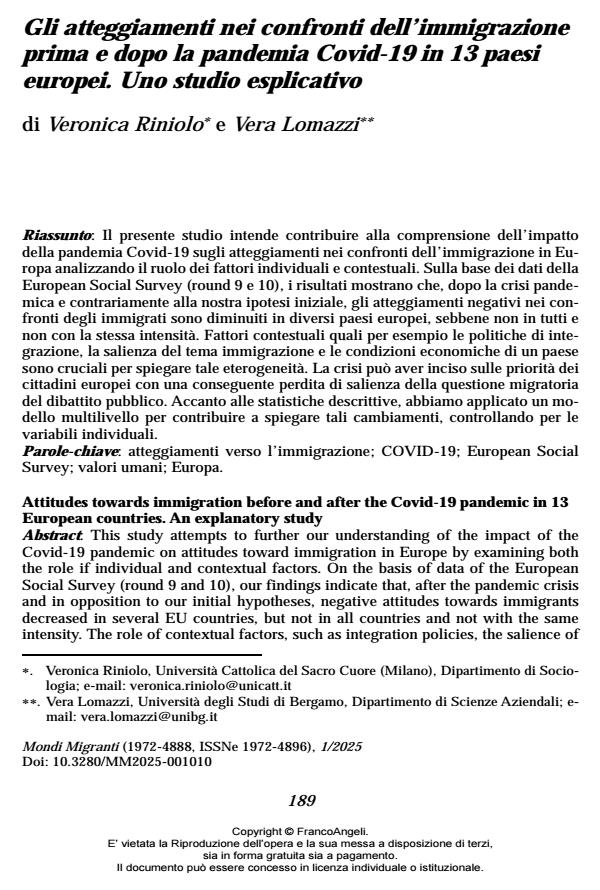Attitudes towards immigration before and after the Covid-19 pandemic in 13 European countries. An explanatory study
Journal title MONDI MIGRANTI
Author/s Veronica Riniolo, Vera Lomazzi
Publishing Year 2025 Issue 2025/1
Language Italian Pages 22 P. 189-210 File size 152 KB
DOI 10.3280/MM2025-001010
DOI is like a bar code for intellectual property: to have more infomation
click here
Below, you can see the article first page
If you want to buy this article in PDF format, you can do it, following the instructions to buy download credits

FrancoAngeli is member of Publishers International Linking Association, Inc (PILA), a not-for-profit association which run the CrossRef service enabling links to and from online scholarly content.
This study attempts to further our understanding of the impact of the Covid-19 pandemic on attitudes toward immigration in Europe by examining both the role if individual and contextual factors. On the basis of data of the European Social Survey (round 9 and 10), our findings indicate that, after the pandemic crisis and in opposition to our initial hypotheses, negative attitudes towards immigrants decreased in several EU countries, but not in all countries and not with the same intensity. The role of contextual factors, such as integration policies, the salience of immigration and economic conditions, is crucial to explain this heterogeneity. Moreover, the consequences of the crisis may have impacted on the priorities of EU citizens and immigration was no longer at the centre of the public debate. Therefore, alongside descriptive statistics, we apply multilevel modelling to contribute explaining these changes while controlling for individual factors.
Keywords: Immigration attitudes; COVID-19; European Social Survey; Human Values; Europe.
Veronica Riniolo, Vera Lomazzi, Gli atteggiamenti nei confronti dell’immigrazione prima e dopo la pandemia Covid-19 in 13 paesi europei. Uno studio esplicativo in "MONDI MIGRANTI" 1/2025, pp 189-210, DOI: 10.3280/MM2025-001010